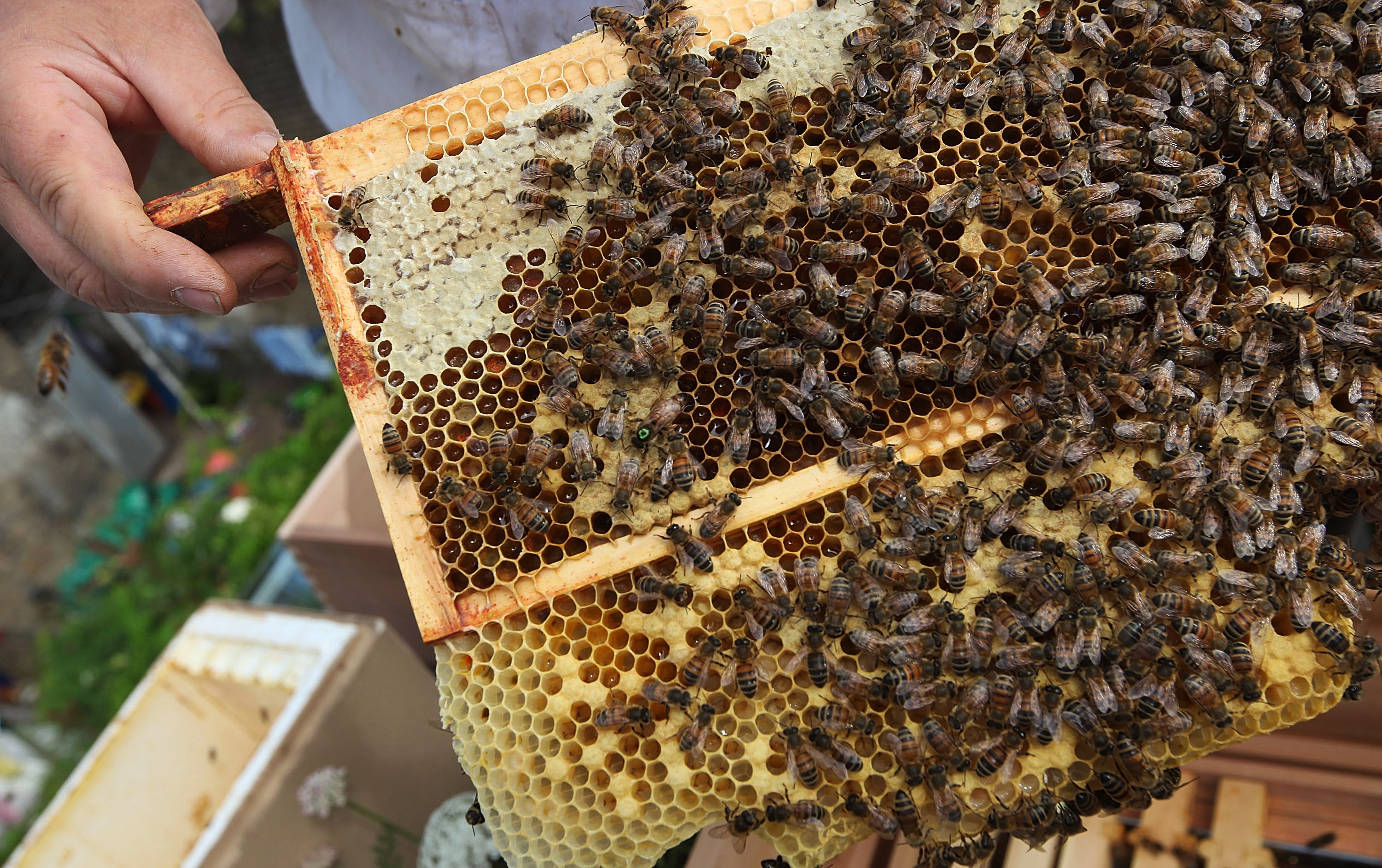Bees able to solve maths tests despite not understanding numbers, researchers find
Honeybees were individually trained to identify placards showing different numbers of shapes

Your support helps us to tell the story
From reproductive rights to climate change to Big Tech, The Independent is on the ground when the story is developing. Whether it's investigating the financials of Elon Musk's pro-Trump PAC or producing our latest documentary, 'The A Word', which shines a light on the American women fighting for reproductive rights, we know how important it is to parse out the facts from the messaging.
At such a critical moment in US history, we need reporters on the ground. Your donation allows us to keep sending journalists to speak to both sides of the story.
The Independent is trusted by Americans across the entire political spectrum. And unlike many other quality news outlets, we choose not to lock Americans out of our reporting and analysis with paywalls. We believe quality journalism should be available to everyone, paid for by those who can afford it.
Your support makes all the difference.Honeybees are able to solve a maths test without the use of numbers, new research has revealed.
In the study, from the University of Sheffield, the insects were able to work out the puzzle using visual cues, which researchers say could help develop future artificial intelligence.
As part of the experiment honeybees were individually trained to identify placards showing different numbers of shapes.
Some learned to find a sugary reward at the placards that had the most shapes on display, while others learned to find the sugary treat at the placards showing the fewest number of shapes.
Experts noticed that once the bees got the hang of this rule, they were able to quickly spot the placard with the highest or lowest number of shapes on them in order to find the sugary treat.
To see whether they used non-numerical clues, the bees were then confronted with two placards showing the same number of shapes - but with one having shapes that had slightly longer edges.
With no sugary treat awaiting them on either this time, scientists expected the bees to head for each placard equally in search of a reward.
But instead - those trained to seek out the highest number went for the sign showing the highest level of continuous variables (those with the longer edges).
And vice versa for those trained with the lowest number of shapes, suggesting the honeybees responded to continuous cues on the shapes and not the number of elements.
Dr HaDi MaBouDi, lead author of the study, published in the Proceedings of the Royal Society B journal, said: “The results of our study show that animals are incredibly clever and can solve tasks in effective and unexpected ways.
“This will be very practical in the future of artificial intelligence for designing smart machines based on animals that have evolved for some particular tasks.
“This doesn’t mean that bees or other non-verbal animals can’t understand numbers, but it does suggest that animals use non-numeric properties to solve the math problems they often face if such information is available.
“However, we hope that our study provides insight into better methods of exploring mathematical cognition in animals.”
With PA


Join our commenting forum
Join thought-provoking conversations, follow other Independent readers and see their replies
Comments